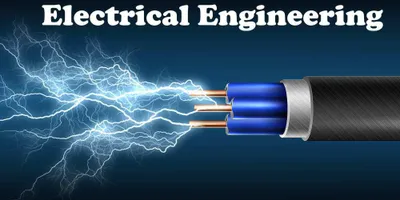
In the vast landscape of Industrial Manufacturing, Electrical Engineering Challenges play a pivotal role in shaping the efficiency and reliability of operations. Let’s delve into the key aspects of these challenges, unraveling the complexities in a simplified manner.
“Efficiency in power factor is like upgrading a car’s engine – making the entire journey smoother and more economical.”
Understanding the Power Play: Voltage Fluctuations
Voltage Ups and Downs
Electrical systems in industries often face a rollercoaster of voltage fluctuations. Imagine your home lights flickering during a storm – industries deal with a bigger, industrial-sized version of this challenge. These fluctuations can harm machinery and disrupt the production rhythm.
Stabilizing Solutions
To tackle this, engineers install stabilizers that act like guardians, maintaining a steady voltage flow. Think of them as traffic wardens smoothing out the bumpy ride for the electrical currents.
Power Factor Predicaments: Efficiency Matters
Cracking the Code
Power factor, a term thrown around in technical conversations, essentially signifies how efficiently electrical power is converted into useful work. In simpler terms, it’s about making the most out of the power we have.
Efficiency Boosters
Industries employ power factor correction devices to enhance efficiency. Picture it like tuning a guitar – adjusting the strings to produce the best melody. Similarly, these devices fine-tune electrical systems for optimal performance.
Cable Conundrums: Untangling the Web
Cable Chaos
In the vast network of an industrial setup, cables are the unsung heroes, transmitting power and data. However, entangled cables can lead to confusion, delays, and even safety hazards.
Organizing Solutions
To address this challenge, cable trays are used. Think of them as neat organizers for your cables, preventing a tangled mess. Organized cables not only enhance safety but also facilitate easier maintenance.
Harmonics Havoc: The Unseen Disruptors
Harmonics 101
Harmonics are like the unwanted guests in an electrical system party – they disturb the harmony. These distorted currents can lead to overheating, affecting the performance of equipment.
Harmonic Filters to the Rescue
Installing harmonic filters is akin to using a sieve to filter out impurities. These filters ensure that only the clean, harmonious currents flow through the system, preventing disruptions.
Smart Solutions: The Rise of Industry 4.0
Industry 4.0 Unveiled
In the era of Industry 4.0, smart technologies are transforming industrial landscapes. This includes the use of sensors, automation, and data analytics to optimize electrical systems.
Smart Sensors: The Watchful Guardians
Imagine sensors as vigilant guards constantly monitoring the health of electrical components. When irregularities are detected, they send alerts, allowing for proactive maintenance. It’s like having a personal health tracker for industrial machinery.
Safety First: Navigating Electrical Hazards
Electrical Safety Basics
Safety is paramount in any industry. Understanding the basics, such as the importance of insulation and proper grounding, is crucial in preventing electrical accidents.
Protective Measures
Safety measures, like using insulated tools and wearing appropriate gear, act as shields against electrical hazards. It’s akin to wearing a helmet and safety gear in a construction site – a necessary precaution.
The Road Ahead: Embracing Innovation
Innovative Solutions for Tomorrow
As industries evolve, so do the challenges. Embracing innovation is key to staying ahead. This involves adopting renewable energy sources, advanced monitoring systems, and sustainable practices.
A Greener Tomorrow
Picture industries harnessing solar power, reducing their carbon footprint. Embracing innovation is not just about solving current challenges but also creating a sustainable future.
Practical Application:
Let’s imagine a bustling industrial setup facing voltage fluctuations. In this practical scenario, the use of stabilizers becomes the hero of the story. Just like a reliable guardian, a stabilizer ensures a smooth flow of electrical power, preventing disruptions to machinery. Picture this as having a constant, steady heartbeat for the industrial operations – no more flickering lights or sudden breakdowns. The practical application of stabilizers showcases their importance in maintaining a stable electrical environment for seamless production.
Real-world Impact:
Consider a manufacturing plant where power factor correction devices are implemented. In this real-world impact scenario, the efficiency boost achieved through these devices reflects in the overall productivity of the plant. It’s akin to upgrading a car’s engine for better fuel efficiency – the entire journey becomes smoother and more economical. In the industrial context, the real-world impact of power factor correction translates to reduced energy costs, optimized machinery performance, and a positive ripple effect on the bottom line.
“Stabilizers ensure a steady heartbeat for industrial operations, preventing disruptions.”
In conclusion, the electrical challenges in industrial manufacturing are diverse and impactful. By understanding and addressing these challenges with innovative solutions, industries can pave the way for smoother operations, enhanced efficiency, and a sustainable future. As we navigate the currents of industrial manufacturing, let’s strive for a brighter, electrified tomorrow.

Electrical Contactor

Proximity Switch/ Proxy Switch























